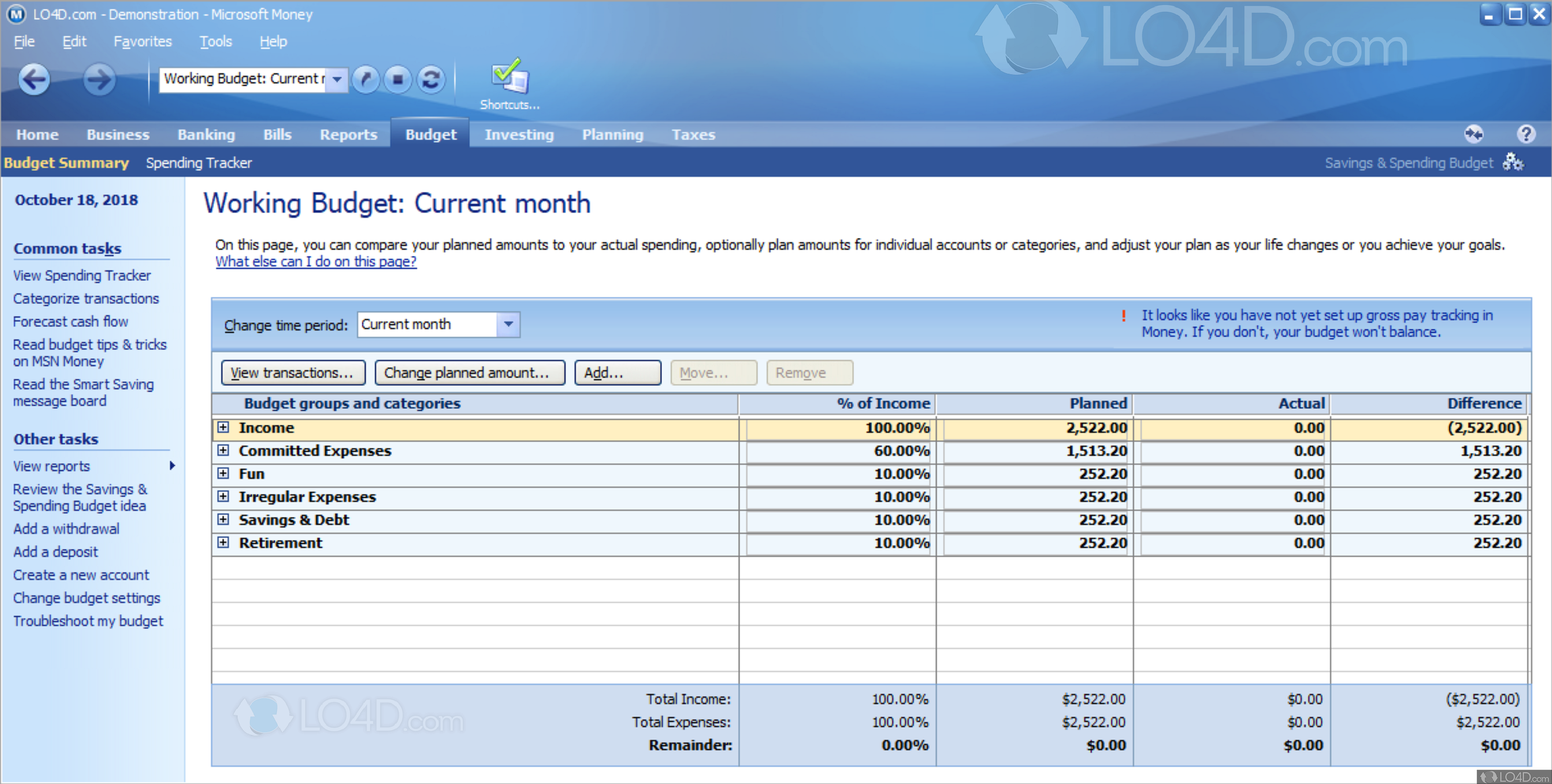

- PERSONAL FINANCE SOFTWARE FOR WINDOWS FULL
- PERSONAL FINANCE SOFTWARE FOR WINDOWS PLUS
- PERSONAL FINANCE SOFTWARE FOR WINDOWS PROFESSIONAL
Here are some things to consider before you narrow down on the software that suits you best:įeatures offered: While most of these software offer similar features, a close study of what’s on offer is recommended.
PERSONAL FINANCE SOFTWARE FOR WINDOWS PLUS
“My life has become easier after using Invest Plus as information about my wealth is now on my finger tips,” says Asher. But, for the last three years, he has been using Invest Plus, which provides him with instant and updated information about his entire portfolio. Mumbai-based software engineer Yogendra Asher had been using accounting software Tally and other tools to manage his mutual fund investments. Besides, several kinds of reports, such as for capital gains, can be generated in a jiffy to help you file income tax returns easily,” says Krishnamorthy. Otherwise, I would have had to toil with an Excel sheet manually. Besides, it tracks the performance of my investments in an automated way, which has made my life easier. “Perfios helps me get a 360-degree view of my personal finance. Personal finance software is much easier to use than spreadsheets for managing your money. The software also rings out an alarm when the final date approaches,” he adds.

“I get alerts a couple of months in advance when investment is nearing maturity. It saves a lot of time.” The software also helps Gupta stay on top of premium payments and maturity dates. One also need not put in details like STT, broker charges and other fees when investing in a mutual fund, but can directly import the details from the contract note. So, if one is buying mutual fund units, it reflects in their bank account immediately.

Varanasi-based engineer Anurag Gupta, who is using MProfit since 2010, says, “Usually, one has to maintain their transactions manually. With personal finance software, you can keep track of everything and, from time-to– time, sit with your planner to make sure your goals are being met,” says Manish Jain, co-founder, MProfit. “Even if you have a planner, this software is useful as many people fail to give all their financial details. However, personal finance software does not replace the need of a financial planner and vice versa.
PERSONAL FINANCE SOFTWARE FOR WINDOWS PROFESSIONAL
Many of us use the services of professional financial planners to manage our finances. Hence, it is important to get organised,” says Biren Shah, managing director, Adit Microsys, developer of Easy Life. There are numerous cases where insurance agents do not give proper services for reminders and policies that are lapsing matured deposits are not collected in time post office savings, which have matured, lie unclaimed and stocks are not bought or sold as per targets set, resulting in huge losses for investors. Many of them also take loans for various purposes. How does personal finance software help? “High-income individuals tend to be very busy and many of them are unable to stay organised in their personal finances. In this story, we discuss the four leading personal finance software from India-Perfios, MProfit, Easy Life and Invest Plus.
PERSONAL FINANCE SOFTWARE FOR WINDOWS FULL
“Personal finance software should be able to provide a full view of one’s entire finances at any given point in time in the most automated way,” says Aditya Prasad, chief evangelist, Perfios. If, like Krishnamorthy, you too want to sort out your personal finances and organise your financial life, then personal finance software is just what the doctor ordered. After trying out several personal finance software, he settled for Perfios, which he found best suited to his needs. Krishnamorthy, a retired Indian Railways officer, felt the need for a single tool with which he could manage all his investments and also know their status at any point of time, duly updated automatically in real time. Krishnamorthy’s investment portfolio comprises a range of financial instruments including direct equity shares, mutual fund units (both equity and debt), bonds, bank savings account, and fixed deposits.


 0 kommentar(er)
0 kommentar(er)
